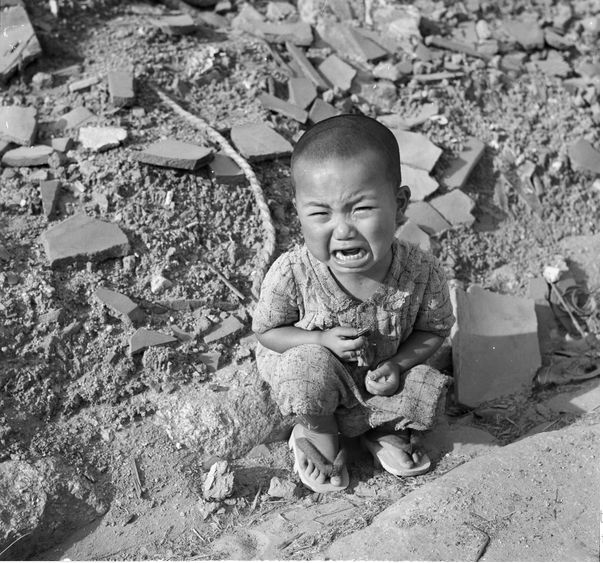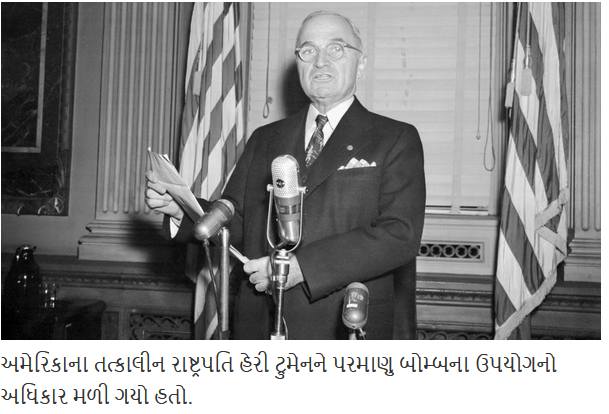76th anniversary: Why did the US choose Hiroshima and Nagasaki for a nuclear attack? What was the reaction of the bomber?
Little Boy and Fat Man, two atomic bombs dropped from the sky
The United States attacked Hiroshima on August 6, 1945, and Nagasaki on August 9, 1945
75 years ago, on August 6 and 9, the United States attacked the Japanese cities of Hiroshima and Nagasaki with atomic bombs. The attack is believed to have killed about 140,000 people in Hiroshima's 3.5 million population. In Nagasaki, on the other hand, about 74,000 people were killed. World War II ended abruptly in the wake of this American barbarism. Japan surrendered on August 14, 1945. However, according to some experts, Japan was in a position to surrender. Survivors of a nuclear attack are called hibakusha. Survivors faced radiation and psychological hardship in the cities after the atomic bomb attack.
The United States dropped the "Little Boy" atomic bomb on Hiroshima from an INELO gay plane. On August 9, a B-29 dropped a plutonium bomb called "Fat Man" on the Japanese city of Nagasaki. Millions of people were killed in a single blow in both of these nuclear attacks, and even more horrifying was the fact that many people are still dying today from the radiation emitted by the detonation of the atomic bomb. It has been more than 75 years since this incident. The United States has always blamed Japan for the incident. According to the United States, Japan refused to surrender when it surrendered to Germany and another ally in World War II, and the Allies were harming their armies, which led to the dropping of the atomic bomb.
Why the attack?
The bomber struck shortly after noon in front of a U.S. military base. However, experts believe that there was no need for such a devastating attack. According to the report, only the formality of the completion of the Second World War in Asia remained. The war in Europe had calmed down just three months before the attack, and a month earlier, Japanese troops were retreating, but tensions between Japan and the United States soared in 1945, as Japan occupied the Indochina region. Wanted to strengthen, which America did not like.
The then US President Harry Truman was given the right to use the atomic bomb. Harry dropped the "Little Boy" atomic bomb on Hiroshima on the morning of August 6, 1945, without delay to teach Japan a lesson and satisfy his ego. At the time of the bombing, many people in the city were on their way to work and children were going to school.
Historian Elparoritz mentions the use of the atomic bomb in his 1965 book. He wrote that the United States wanted to move beyond the Soviet Union in a matter of power and that it had demonstrated its power by dropping these two bombs.
After the attack, the US blamed Japan.
Why were Hiroshima and Nagasaki chosen?
Another atomic bomb was dropped on Nagasaki at 11 a.m. just three days after the bombing in Hiroshima. The reason given for dropping the atomic bomb on these two cities was stated by the fact that US President Harry Truman wanted the city to have a sufficient impact after the bombing and that is why these two cities in Japan were chosen. One of the two cities was Japan's seventh largest at the time, while the other was the headquarters of the country's Goku Army.
The destruction of Hiroshima
Most of those who were present in Hiroshima on August 6, 1945, were killed, and those who survived were exposed to radio radiation. This was an effect that will be felt for generations to come. An area of 13 square kilometers was devastated when Little Boy exploded in the atmosphere of Hiroshima. More than 60 percent of the city's buildings were destroyed.
Kokura survived and Nagasaki perished
The calendar changed the date once again and this time the date was 9 August 1945. America arranged a bomb in the B-29 superfotress box. The bomb was like a giant watermelon, weighing 4050 kg. The bomb was named 'Fat Man' after Winston Churchill.
The bomb targeted the industrial town of Kokura, home to some of Japan's largest and most heavily munitions factories. On August 9, the B-29 plane was flying at an altitude of 31,000 feet and at 9:00 a.m. and 50 minutes past Kokura city was visible. The bomb was supposed to be dropped from an altitude of 31,000 feet, but there were heavy clouds over the city. The B-29's fuel was rapidly depleting. The plane had only enough petrol to return. Group Captain Leonard Chesher said: 'We started flying at 9am, when we reached the target there was cloudy weather. We then received orders to drop bombs on another target, Nagasaki. '
The clock struck 11 hours and 2 minutes when the B-29 landed on Nagasaki. The pilot of the plane turned on the automatic bomb-throwing devices and in a few moments the giant bomb began to move rapidly towards the ground. The bomb exploded at an altitude of 500 feet above the earth's surface after being pushed to the ground for 52 seconds. A gigantic ball of fire rose in the shape of a mushroom. The shape of the sphere continued to grow and quickly engulfed the entire city. The city of Nagasaki, surrounded by mountains, was devastated in an area of only 617 square kilometers.
US President Harry Truman wanted the city to have a sufficient impact after the bombing, which is why the two Japanese cities were chosen.
9 August 1945. America arranges a bomb in a B-29 superphotress box. The bomb was like a giant watermelon, weighing 4050 kg. The bomb was named 'Fat Man' after Winston Churchill.
Tibetans said they saw clouds of smoke and a rapidly spreading fire. Gotagota of smoke spread throughout the city and engulfed the entire city. Thus in a few moments everything in Hiroshima was desolate ... deserted and desolate.
Theodore Van Creek, the pilot of the US plane that dropped the atomic bomb on Hiroshima, died on July 30, 2014 at the age of 93. The famous creek by the Dutch name was the last surviving member of the crew-member of the plane named 'Enola Gay'. He was posted on this plane when he was 24 years old. When asked about the nuclear attack on Japan, he said he had no remorse for the attack. He d Defended the attack, saying it was the end of World War II.
Charles W. Sweeney, the pilot of the Nagasaki atomic bomb during World War II, flew a B-29 to attack Nagasaki when he was 25 years old. Sweeney defended the bombing for life. He was a member of Wars & N.I. He also wrote a book, Witness Account of America's Last Atomic Mission. "I see this as my duty," he said in a 1995 interview. I want the war to end and we all to return to our families. ' Sweeney, 84, died on July 18, 2004.













No comments:
Post a Comment